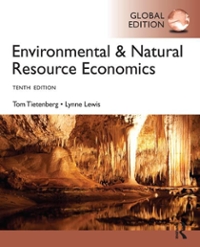questions:
Question 3. Point allocation: (a) 15%; (b) 5%; (c) 5%; (d) 35%; (e) 20%; (f) 20%. Consider the model y = $1b/1-1 + 4291-2 + Et, where y, is scalar and z, is a martingale difference sequence and a sample t = 1, ..., T is available. (a) Express this AR(2) in terms of its Beveridge-Nelson decomposition form. Be explicit in terms of the correspondence between the AR(2) parameters o and d, and the parameters of the B-N form, say o and p. (b) Derive under what conditions is the AR(2) model stationary in terms of an expression for its two roots, say , and 12. You do not need to solve the resulting two equation system. (e) Suppose A1 = 1. Solve the system of two equations found in part (b). (d) Given your answer in part (a), derive the asymptotic distribution of S in the regression Ay = 6y-1 + By-1 + Et Hints: let m = (1-61) 'et with lo| c] = $(c)/[1 - 6(c)], where o(-) and 4(.) denote the standard normal pdf and edf . (e) Return to the original Tobit model at the start of this question. Give an expression for Ely(x], with complete derivation. [Hint: use the result given in part(d)]. (f) Hence state how to obtain an estimate of / in the Tobit model by NLS estimation. (g) This part is unrelated to the previous parts. Show that a three-choice multinomial model can be estimated using a binary logit package. A brief answer will do.Question 1. Point allocation: (a) 10%; (b) 20%; (c) 20%; (d) 10%; (e) 20%; (f) 20%. Consider the density f(y) = $exp(-y/7) [1 + exp (-9/7)]?' where -co co and it can be shown that Ely) = 0 Vly] Suppose we have a random sample {(yi, x;), i = 1, ...N}, where x; is a k x 1 nonstochastic regressor vector and y; has the above density with 71 = exp (x, B), where B = Bo in the data generating process. (a) Give the log-likelihood function. (b) Give the first-order conditions for the MLE B of Bo- (c) Obtain the limit distribution of VN(A - P.). Obtain this as easily as you can. You need not formally verify any LLN and CLT used here, but state any assumptions made. (d) Does consistency of A require correct specification of the density of y, or can consistency be obtained under weaker assumptions on y? Explain your answer. A brief explanation will do and there is no need to apply a LLN or CLT. (e) Given the above information, provide the objective function for a consistent method of moments or generalized method of moments estimator for , that is not the MLE. Your answer must be specific to this question. (f) Give the expression for the asymptotic variance for your specific estimator in part (e). Obtain this as easily as you can









